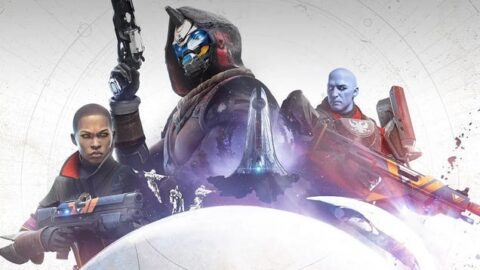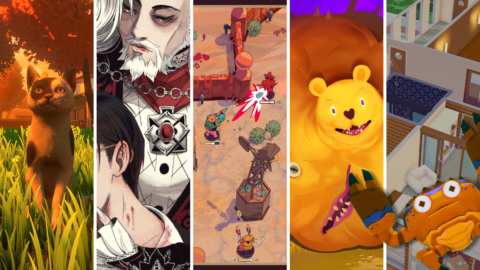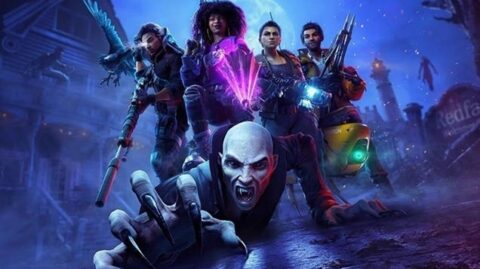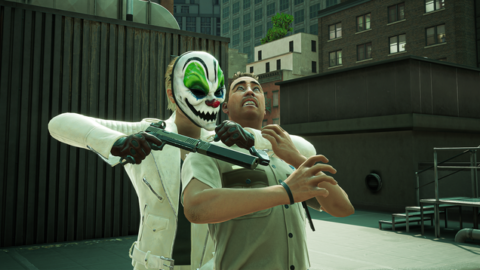Hexa, the Paris-based startup studio that started its life as eFounders, just shared a list of the six next companies that will emerge from the studio. It’s an […]
Destiny 2 Maker Bungie Latest PlayStation Studio To Cut Staff

Bungie is the latest PlayStation studio to face layoffs. While the scale of the cuts wasn’t immediately apparent, multiple, now-former staff members began posting on social media on October 30 that they’d been let go by the beloved Destiny 2 maker.

The best part of ‘Foe’ is how the world is ending
Garth Davis’ dystopian sci-fi thriller “Foe” shows the end of the world happening slowly but surely, thanks to climate change.

Garth Davis’ dystopian sci-fi, Foe, has been getting some lukewarm reviews. But there’s one surefire element of the film, based on Iain Reid’s 2018 novel, that actually deserves its moment in the burning, burning sun — and it’s not necessarily the beautiful people feeling all the feelings within it.
It’s the way the world as we’ve known it is actually ending, often incrementally but surely. And you’d better believe it’s all thanks to climate change.
How is the world ending in Foe?
Set in the year 2065, Foe is a work of speculative fiction that presents an Earth that has become almost but not entirely inhospitable, when fresh water and inhabitable land are scarce. They’re not human rights but instead the most important capital a human being can own. It’s Mad Max without the steampunk or gang violence.
Reid’s novel keeps specifics of the apocalypse off the page, but the film, which Reid and Davis co-wrote, gives details at the top. In this version of America, the government’s Federal Climate Alert System has become useless. Human displacement sits at the centre of the global climate crisis, with nations uprooted by extreme weather events. Air quality has declined and respiratory conditions have risen. People are encouraged to stay indoors to avoid the extreme heat. Folks live off-grid if they can, using solar panels and reusing their waste water, but it’s all a little too late. At the core of the narrative, humanoid AI robot substitutes have replaced human labour in many industries.
Quietly surviving on a barren, isolated Midwest property is married couple Hen and Junior, played by Saoirse Ronan and Paul Mescal. In this future, inhabitable land is mainly owned by companies or governments and used for farming; as for the rest, inheritance rules, as Junior’s property is fifth generation-owned. Above the dusty, cracked earth of the property, extreme weather events from intense dust storms to extreme heat are an everyday occurrence. Only one tree survives on the land, kept alive by the couple’s waste water. In fact, water is such a precious commodity that we regularly see Junior and Hen drinking cans of beer instead of water first thing in the morning — perhaps beyond mild hydration, beer doesn’t hurt for dealing with the end of the world, either. Though for someone trying to conserve water, Hen sure has some lengthy shower cries.

Credit: Amazon Studios
Foe shows the end of the world in an isolated, domestic silence for two people, but it’s also not quite ended. At every turn, it seems people are still working hard to keep surviving the harsh conditions. However, Junior and Hen’s quiet, rural life changes with the arrival of a man called Terrance (Aaron Pierre), who works for a government-backed company called OuterMore, wielding a plan to evacuate the planet — but notably slowly.
Plans to move people off-planet to a colossal space station near Earth are well underway, moving away from a “climate migration strategy” to simply getting the hell out of here. Terrance mentions that the moon, Mars, and other planets were possibilities built for the “first wave of temporary settlement”, but due to their distance from Earth and the time it will take to go back and forth to build a new colony there, OuterMore has instead built an enormous planet of its own near Earth and readies humans for permanent relocation to space through years of training.

Credit: Amazon Studios
People are chosen randomly through a lottery to participate in the first phase of the space program, known as The Installation, a two-year placement on the station to test its readiness for a whole planet to live on — but Terrance notes Junior’s physical strength as a positive attribute for it. Notably, the program isn’t optional for those chosen, instead functioning as a form of “fortunate conscription”. Through discussions of this station around Junior and Hen’s dining room table, Foe lightly takes aim at the billionaire space race and billion-dollar plans to terraform other planets like Mars. “Why should you be spending money up there when you should be fixing things down here?” Hen asks.
Hollywood disaster films love to cut to the chase.
By no means is Foe the only film to predict the end of the world through climate change and eventual human relocation to space — even in recent years, we’ve seen the likes of 2016 sci-fi Passengers sharing similar scenarios. But it’s something films have only started to really hammer home within the last few decades, with a notable rise in the 2000s. Though scientists had been warning of the coming threat for frustrating decades, and weather disaster films had long rampaged through cinemas, filmmakers finally seemed to harness these legitimate fears in the 2000s and 2010s, punishing earthlings’ blatant disregard for the planet with brutal, extreme weather-driven consequences in films like The Day After Tomorrow, Geostorm, 2012, and the Keanu Reeves remake of The Day the Earth Stood Still.
Not simply allowing viruses and sentient machines to destroy the world as we know it, rising sea levels caused by a warming planet finally got their moment in the 2000s, notably with Steven Spielberg’s 2001 film A.I. Artificial Intelligence — also aligned with Foe in terms of AI human replacements and self-aware robots in the coming apocalypse. In the film, set in the 22nd century, melting Arctic ice causes catastrophic flooding in coastal cities, meaning widespread human displacement, starvation, and death. New York is underwater. The global population plummets and humanoid robots step in for both human labour and companionship because they’re “never hungry and … did not consume resources beyond those of their first manufacture.”
In the book Hollywood Wants to Kill You, Rick Edwards and Dr. Michael Brooks write of Hollywood’s tendency to speed things up when it comes to planetary death by climate change, to get to the dramatically perilous stuff overnight instead of showing how it happens and how we could have stopped it gradually. The authors particularly skewer the films Geostorm and The Day After Tomorrow, which predict an overnight climate overhaul, a catastrophic tipping point that sees the planet plunged into every kind of extreme weather Hollywood can conjure at once.
“It turns out that governments, both Hollywood-imagined and real-life, aren’t really interested in long-term gains that involve short-term pain,” Edwards and Brooks write. The film 2012 also does this, cutting straight to the chase, but at least the movie consistently reiterates that scientists and world leaders have known what’s coming for years.
But one of the most realistic parts of the potential end of the world in Foe is not that we’ll all inevitably shack up with a smokin’ partner with an endless supply of PBRs. It’s that some things will happen slowly, the decline of the planet’s habitable spaces slowly increasing as CO2 levels skyrocket, climate science misinformation continues, and government inaction prevails. (Some impacts, like amplified Western U.S. wildfires and increased flooding, are happening rapidly.)
Foe isn’t a perfect representation of a future Earth, notably being the experience of two sad yet socioeconomically advantaged white people, citizens who by no means are on the frontline of the climate crisis. And notably, climate doomism itself gets us nowhere — we’re not completely up the bone dry creek yet. Despite how things appear, we haven’t passed a point of no return, and earthlings still have the power to either exacerbate the planet’s problems or seal them in stone.
Instead, Foe is a cautionary tale, a hypothetical endgame. One that’s slow but sure, and without action on climate change, could very well be what the end of the Earth looks like.
How to watch: Foe is now in theaters and will be streaming on Prime Video at a later date.
Fortnite Hikes V-Bucks Price As Inflation Hits Epic’s Reboot
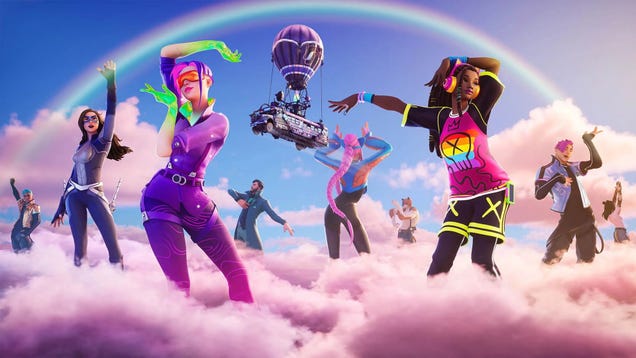
Everything’s getting more expensive, even inside Fortnite. Epic Games’ free-to-play battle royale is raising the price of V-Bucks today by roughly 12.5 percent. Being the last one standing just got a little more expensive, at least if you want to look stylish and rank up the season battle pass while doing it.

9 indie games we loved from SXSW Sydney Games Fest
Here’s some of the most interesting upcoming indie games at SXSW Sydney, including “The Dungeon Experience” and “Drag Her!”

The inaugural SXSW Sydney took place this October, taking the famous tech, film, music, and games festival international for the first time ever. It was already a big month for video games in Australia, with the Melbourne International Games Week and PAX Aus ending just seven days prior.
Fortunately, many exhausted independent game developers still made their way to SXSW Sydney to show off what they’ve been working on.
In no particular order, here are some of the most interesting upcoming games we checked out at SXSW Sydney.
1. The Dungeon Experience
If you were on gaming TikTok back in 2021, there is a non-zero chance you encountered a gameplay clip of someone examining a rather vocal crab, or offering an ingenious solution to the issue of how to approach feet in first-person games. This is that game.
Developed by Australian studio Bone Assembly, The Dungeon Experience positions you as an intrepid adventurer taking part in the titular experience: a fantasy-themed role playing attraction that’s like if an escape room and a LARP had a very weird baby. Unfortunately, the whole thing is run by a single enterprising crab on a very tight budget, who may or may not be trying to rope you into a multi-level marketing scheme.
This fully voice-acted experience draws inspiration from The Stanley Parable, and unapologetically leans into the absurd as your friendly crab guide continually promises you the elusive treasure of Financial Freedom.
The Dungeon Experience is scheduled for release when “the four moons of Xogris align and the Messiah Khidrius returns.” So basically, within the next year or two.
2. Drag Her!
U.S. developer Fighting Chance Games raised over $75,000 on Kickstarter to bring this fabulous fighting game to life, and it’s easy to see how. I mean, it’s drag queens fighting each other. What more do you want?
Drag Her! is a 2D side-scrolling fighting game featuring a cast of real drag performers, including famous names such as Kim Chi, Laganja Estranja, and Alaska Thunderfuck 5000 (all officially licensed, of course). Each drag queen is transformed into a cartoon fighter with her own arsenal of creative and thematically-appropriate attacks, which somebody appears to have had a lot of fun naming.
Drag is, by nature, a performance art centering on exaggeration, which means Drag Her!‘s embellishment of these personas gives it a lot of room to get creative. The real Alaska Thunderfuck 5000 probably isn’t an alien from Planet Glamtron, nor is Kim Chi seven feet tall and capable of conjuring pancakes out of thin air. I’ve never met them though, so who knows.
You can also change up characters’ outfits by swapping their colour palette, and the health bars are lipsticks. Fabulous.
3. Drăculești
Drăculești, or “the gay Dracula game,” is exactly what it sounds like. In this beautifully illustrated visual novel from Australian-based Fine Feathered Fiends, you play as Roger M. Renfield, a timid lawyer visiting Vlad Dracula’s estate on business. Unfortunately, your fragile mental health takes a further hit when you discover the castle’s occupants are much more villainous than they first appeared.
Though Drăculești is far from the first media to romanticise Dracula, it does distinguish itself by not even pretending your blood-sucking love interest is in any way a good person. The game might even test the question of how far you would go for love, with the developers stating that Renfield will have to participate in some pretty awful acts to attract Dracula’s interest.
That will probably just heighten the appeal for some people. Fortunately for those who can’t bear to be mean to video game characters, Drăculești will have three alternative potential love interests in case you need to bail on Dracula’s route. In addition to your host, players can romance the mysterious Ghost, Dracula’s second bride and aspiring divorcee Cez, or your comparatively normal boss Jonathan Harker.
4. Hotel Magnate
Hotel Magnate brings together elements from The Sims and Two Point Hospital to create a hotel management simulator featuring extensive decor customisation. It’s an undeniably attractive idea, but also an incredibly ambitious project.
Developed by Australian studio Arcade Oven, Hotel Magnate puts you in charge of managing a hotel. This includes building new rooms and facilities, hiring and assigning staff, and meeting guests’ demands to ensure they leave a favourable review. Their room might not have had a mini-fridge when they booked it, but they’ll certainly be unhappy if it doesn’t have one when they leave.
A lot of work still needs to be done on this game, with the developers still adding features and tweaking the gameplay. The demo build Mashable tried had several bugs to iron out, and the information displays could be confusing. But if you’re a fan of management sims, this might be one to keep an eye on to see how it develops.
Hotel Magnate is currently out in early access.
5. Winnie’s Hole
A former colleague advised me to check out Winnie’s Hole, stating that it seemed right up my alley. He wasn’t wrong, but it’s a very concerning statement about my vibes.
Winnie’s Hole is a horror-themed strategy game from Australian studio Twice Different, in which you play a virus invading the gut of lovable public domain character Winnie the Pooh. By stringing together tetrominoes through Pooh Bear’s internal organs, players spread and gather upgrades to grow stronger, while also mutating your remarkably blasé host’s physical appearance.
These mutations later come in handy when Winnie’s frightened and concerned friends attempt to address the teethed hole in his rumbly tummy — not to mention the many extraneous limbs and eyes he has grown.
Like a messed up deckbuilder, Winnie’s Hole allows players to curate a collection of mutations with effects that complement each other. As such, Pooh will look different in every run, as the upgrades you choose dictate whether he’ll sprout a new limb, eye, or bulging tumour.
Winnie’s Hole is scheduled to be released in early access this year.
6. Crab God: Mother of the Tide
Sometimes video game titles give little indication of what it’s actually about. Crab God: Mother of the Tide is not one such title. You are crab, you are god, and you are mother.
Developed by Australian studio Chaos Theory Games, Crab God: Mother of the Tide draws influence from Kingdom and Reus, positioning you as the titular Crab God watching over your crab babies. Hatching your children and putting them to work, you direct your colony to destroy invasive plants, plant native species to attract other sea life, and gather enough resources before time is up to safely move on to the next area. Fail, and you may have to sacrifice some of your children for the greater good. Crabs for the Crab God.
Your aim is to gradually take your colony from the Great Barrier Reef down to the Mariana Trench, with your children growing and ageing with every move. Personally, if I’d gone through all the trouble of making my little patch of ocean so nice, I’d rather stick around for a bit. At the very least I wouldn’t move on before I’ve hoarded enough food to enable all my children to survive the trip. But that’s just me.
Crab God: Mother of the Tide includes real oceanic species, which is an interesting touch but can make it difficult to differentiate between invasive and native species (it turns out that green doesn’t automatically mean good). The developers are still working on it though, so hopefully things are a bit clearer when the full game is released.
7. Enter the Chronosphere
Enter the Chronosphere sits at an interesting place between a real time strategy game and a turn-based one. The top-down bullet hell from Australian studio Effort Star uses similar mechanics to SUPERHOT, in that time only moves when you do. This means you’re often given a nice long moment to contemplate your choices just before you bite the dust.
The sci-fi roguelike tasks you with saving the universe by disabling the titular chronospheres: round, multi-levelled structures that twist time and threaten reality. But in order to do so you must fight your way through them, with each chronosphere featuring different biomes that include varied assortments of weapons, enemies, and items.
Let’s be real though — the story is second to the gameplay on this one. Enter the Chronosphere lets players choose from an eclectic cast of mostly alien characters, each with their own special abilities, and pick up different weapons and upgrades to figure out what play style best suits them. Simply spraying and praying won’t cut it here, with thoughtful action your best bet at making it out alive.
Fingers crossed the final game will let you rewatch your run in real time after you’ve finished, so you can pretend you were much cooler than you actually were.
For a better idea of the gameplay, you check out Effort Star’s earlier, browser-based version of Enter the Chronosphere for free on itch.io.
8. Copycat
In comparison to our neverending capitalist rat race hellscape, the lazy life of a cat seems downright luxurious. That doesn’t mean cats don’t have their own problems to deal with, though.
Narrative game Copycat puts you in the position of Dawn, a shelter cat who ardently believes she belongs in the wild. Adopted by an older Australian woman named Olive, Dawn slowly begins to bond with her, learning that life as a housecat isn’t all that bad. However, a mix-up eventually puts Dawn on the street with an imposter in her place, leaving it up to her to find her way back home.
This feline-themed walking simulator from Australian developer Spoonful of Wonder is fully voice-acted, which means you can tell it’s set Down Under from the moment Olive opens her mouth. Copycat targets your softer emotions, aiming to reflect on love, loss, and the meaning of home. There’s also a cat wand minigame.
9. Lil’ Guardsman
If you enjoy the bureaucratic gameplay of Papers, Please but want something less soulbreakingly grim, Lil’ Guardsman might just fill that paperwork-shaped hole in your heart.
Lil’ Guardsman follows Lil, a 12-year-old living with her father in a retro fantasy world of cassette players and elves. Unfortunately, her dad would rather gamble than perform his duty as a city guard, leaving it up to Lil to gaslight, gatekeep, and girlboss in his stead. This involves questioning anyone who tries to enter the city, and making the call on whether or not to admit them, turn them away, or even jail them. You know, normal kids’ responsibilities.
Despite the child labour, Canadian studio Hilltop Studios‘ deduction game is a friendly, lighthearted experience that doesn’t take itself too seriously, and boasts a tonally appropriate art style reminiscent of a Saturday morning cartoon.
Super Mario Bros. Wonder: The Kotaku Review
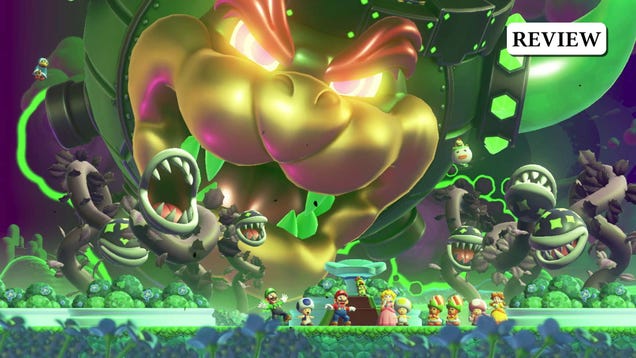
First, the bad news: Super Mario Bros. Wonder doesn’t cure covid-19. Trust me on that. But, if you ignore that one flaw and focus on everything else—the gorgeous graphics, the immensely creative levels, the pitch-perfect music—it’s easy to see this is one of Nintendo’s best Mario games in years.

Big Xbox Shakeup Might Avoid Another Redfall Debacle
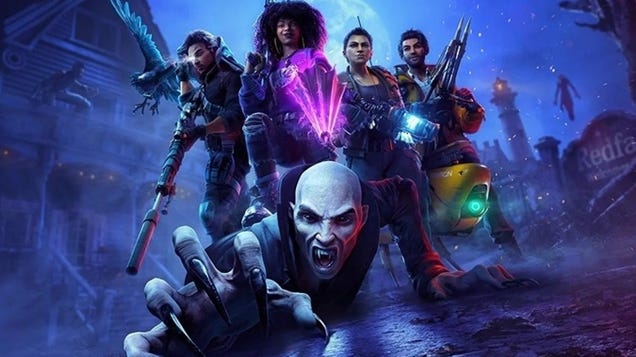
Today Microsoft announced a re-organization within its Xbox division that will see ZeniMax and Bethesda Game Studios report more directly to head of game services, Matt Booty. The shift comes after vampire shooter Redfall was so poorly recieved that Microsoft Gaming CEO Phil Spencer went on a fan podcast to publicly…

Payday 3 Devs Apologize Again For Missing Major Update
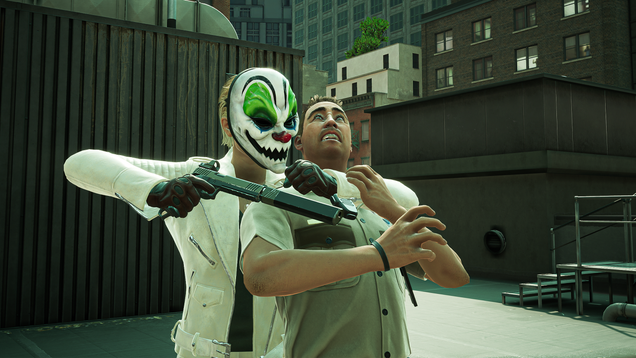
Payday 3 devs have extended their apology tour that began back in September, when Starbreeze Studios CEO had to apologize for the state in which the co-op heist game launched. The always-online bank robbery simulator suffered from major server and matchmaking issues that were fixed a little over a week after launch,…

Tape It’s software for musicians aims to delivers studio-quality noise reduction via AI
After Apple discontinued its Music Memos app favored by musicians for developing song ideas, a new startup called Tape It stepped in to fill the void with an […]

